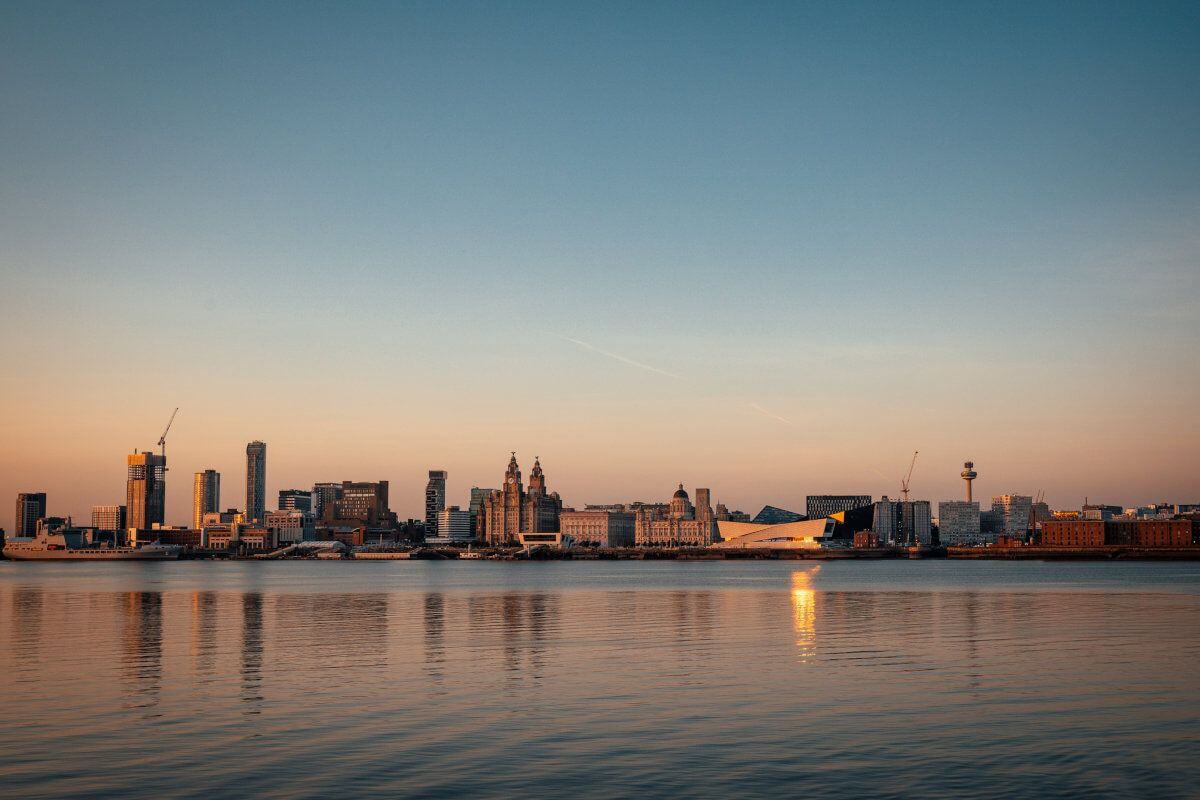*FYI - this post may contain affiliate links, which means we earn a commission at no extra cost to you if you purchase from them. Also, as an Amazon Associate I earn from qualifying purchases. Check out our Privacy Policy and Disclosure for more info.
From the bustling city of Liverpool to the natural beauty of Lake Windermere, those looking for places to visit in North West England are spoiled for choice.
Along with the busy cities of Manchester and Liverpool, North West England is most known for its stunning countryside around the Lake District.
… But that’s not all that North West England has to offer!
In this post, we’ll be sharing our top picks for places to visit in North West England, including the must-see cities, castles and homes of famous former residents.
We hope you enjoy learning about this exciting region and be sure to let us know in the comments which North West England must-sees we should add to our list!
Liverpool
While it’s understandably famous as the birthplace of The Beatles, Liverpool is full of other interesting sights and examples of the city’s fascinating history.
Not only is Liverpool the fifth most-visited city in the United Kingdom, it also has the second-most number of art galleries, museums, listed buildings and listed parks in the UK, ranking only behind London!
Top attractions include the Tate Liverpool, Liverpool Cathedral, The Beatles Story, Sefton Park, the Museum of Liverpool and Merseyside Maritime Museum.
Liverpool was also home to the main offices of both the Cunard and White Star Line shipping companies, and was the port which the doomed Titanic ship listed as its home port.
As the World Capital City of Pop (according to the Guinness World Records), Liverpool is a must-visit for music fans, and has plenty of nightlife to explore once you’ve had your fill of museums.
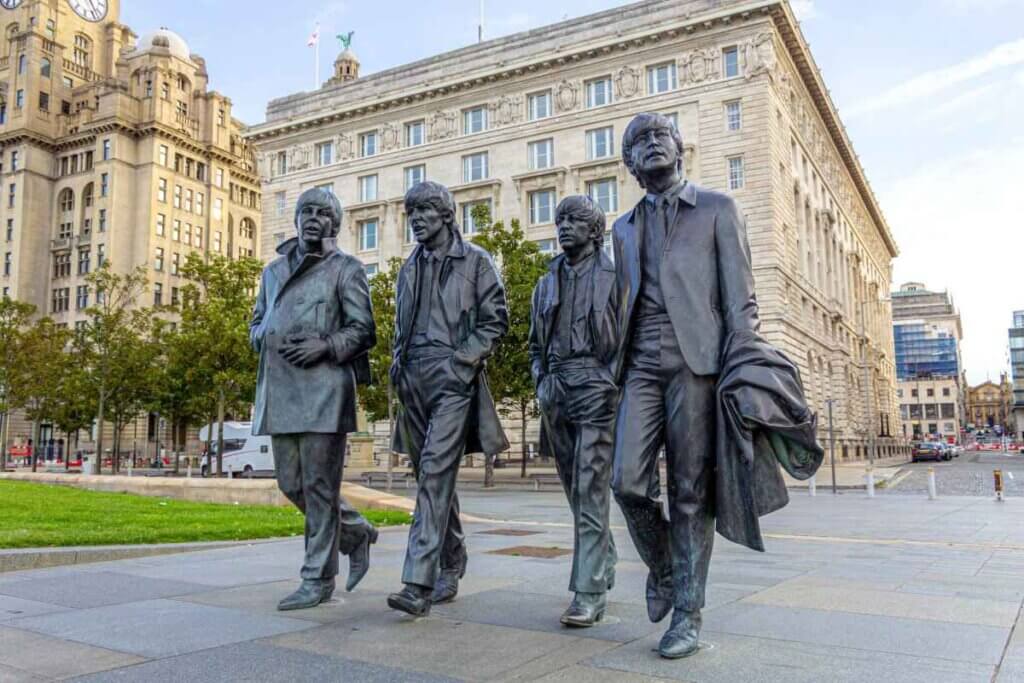
Manchester
While Liverpool may have more museums, art galleries and the like, Greater Manchester is actually the largest city in the region, and one of the most popular places to visit in North West England.
Originally settled by the Romans, Manchester experienced a boom in textile manufacturing during the Industrial Revolution, leading to it becoming the world’s first industrialised city.
Nowadays Manchester is a popular foodie destination, home to many boutique shops and creative places, as well as some excellent museums, art galleries, theatres, etc.
The nightlife of Manchester is also just as pleasing as that in Liverpool, with live music venues and clubs to explore.
Other unique attractions include the Gothic-style Manchester Cathedral, Chill Factore: Britain’s longest indoor real-snow slope, and Old Trafford Football Stadium, the home of Manchester United.
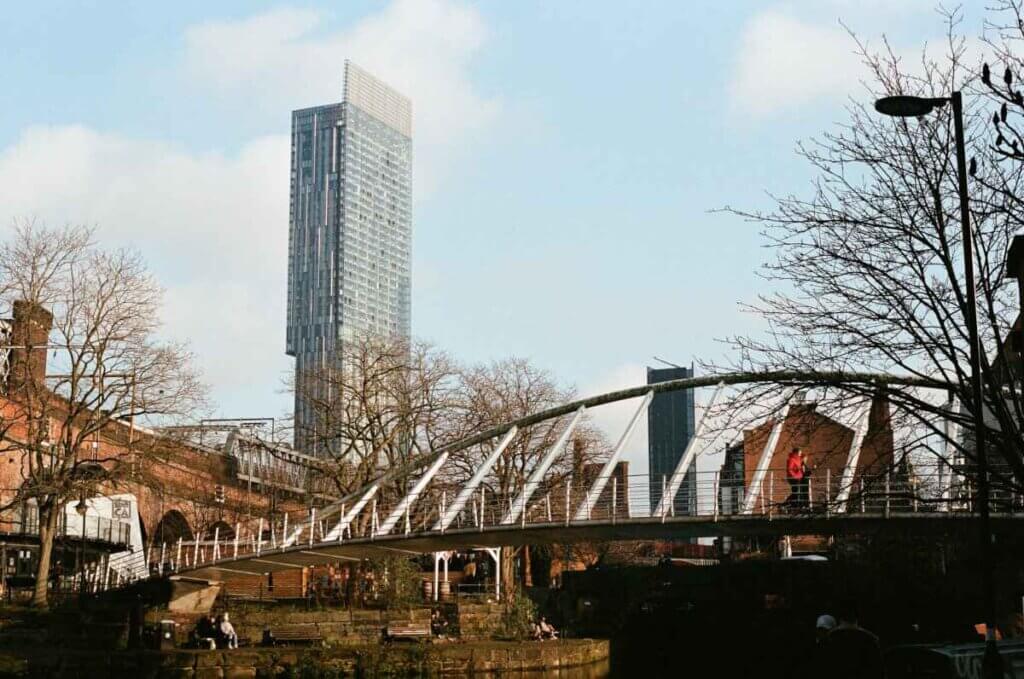
Blackpool
If you’re looking for a beach break in North West England, then you definitely can’t miss the seaside town of Blackpool.
Blackpool is most famous as a seaside resort town, with miles of sandy beaches, as well as three Victorian piers with fun things to see and do on all of them, including a Big Wheel, fairground rides, a theatre, a museum, bars, cafés and other yummy food stalls.
Blackpool Tower is the number one attraction, with stunning views over the town and coastline from the Tower Eye.
Within the tower, there is also a dungeon walk-through experience, a ballroom (which always features in one episode of each Strictly Come Dancing season), a bar with a virtual rollercoaster and the oldest permanent circus in the world!
There’s also an amusement park located at Blackpool Pleasure Beach, while the Victorian promenade along the shoreline is a lovely spot for a walk.
PRO TIP: Don’t miss the High Tide Organ which plays music by the swell of the waves at high tide.
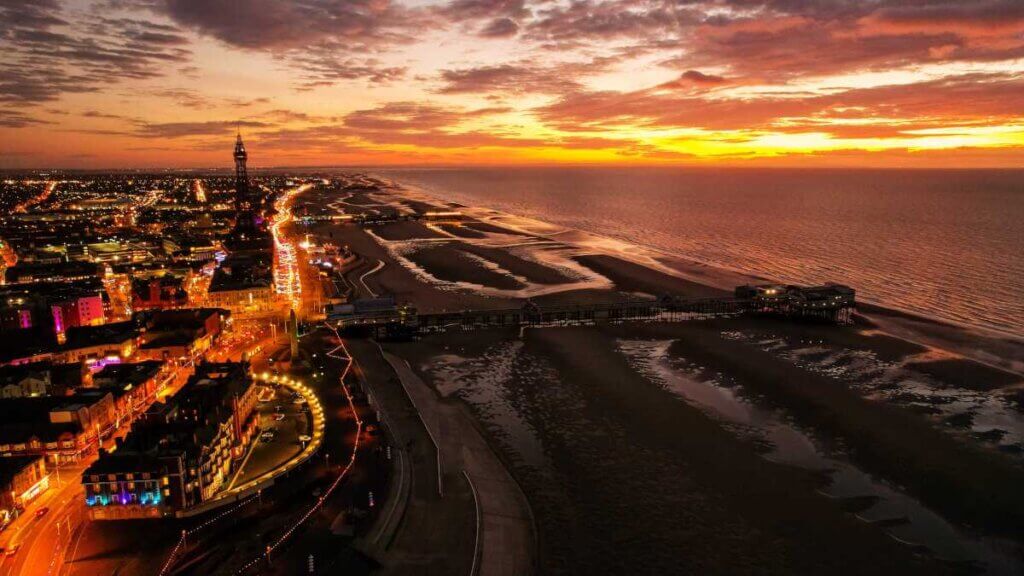
The Lake District
Many of the most beautiful places in North West England are located in the popular Lake District: a region filled with gorgeous lakes, forest and mountains.
The Lake District National Park is the most-visited national park in the whole United Kingdom, the largest in England and Wales, the second largest in the United Kingdom (after the Cairngorms in Scotland), and a UNESCO World Heritage Sight to boot!
Top sights in the Lake District include the charming village of Ambleside, Lake Windermere (the largest lake in the Lake District) and Hill Top Farm, the former home of children’s author Beatrix Potter (author of The Tale of Peter Rabbit and others), which is now open to the public as a museum.
Visitors head to the Lake District to enjoy walking, boating, wildlife-spotting, cycling and cruises, but it’s a region with plenty to do, including just enjoying the stunning landscapes.
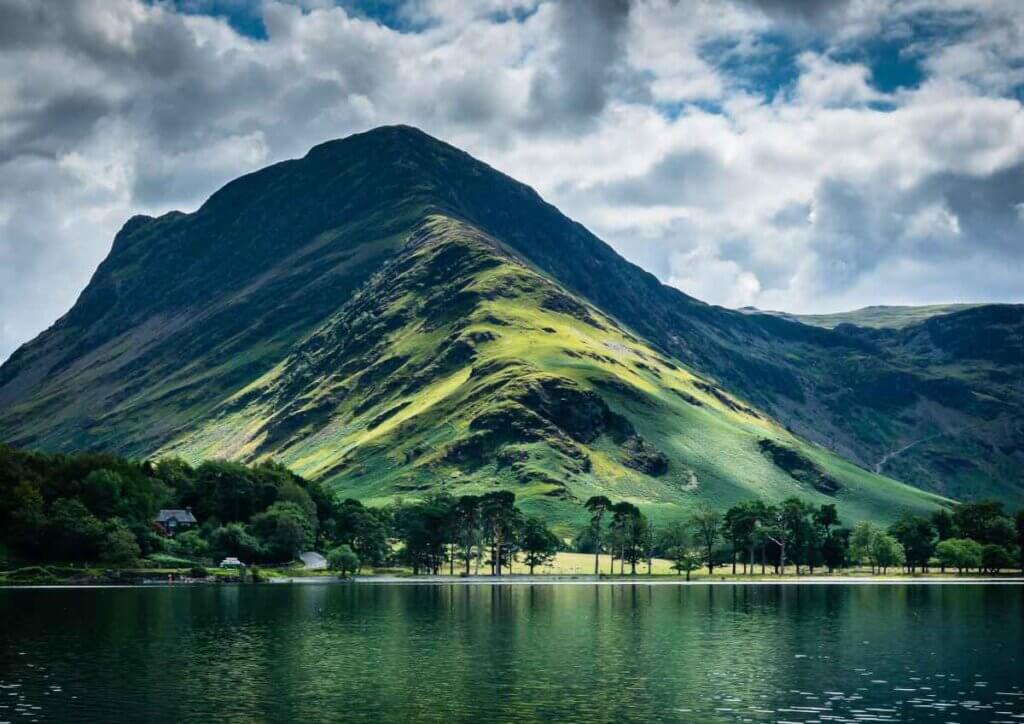
The Homes of William Wordsworth
English Romantic poet William Wordsworth lived and worked in the Lake District for much of his life, even helping it to become a popular tourist destination with his Guide to the Lakes, first published in 1810, and re-printed five times!
His poem “I Wandered Lonely as a Cloud” is one of the most famous poems in the English language, and was inspired by seeing daffodils growing on the shore of Ullswater; the second-largest lake in the Lake District.
Fans of Wordsworth can visit three separate museums in the region, all of which he lived in at different times in his life. Wordsworth House and Garden, where he was born and spent his childhood, is located in the town of Cockermouth. Visitors can experience life in the 1770s here, with staff in period costume going about their days.
Dove Cottage, where Wordsworth lived between 1799 to 1808 with his sister Dorothy, is located in Grasmere and also open to the public. While it doesn’t seem to have any connection to the poet, the Wordsworth Hotel and Spa is also located in Grasmere, for luxury accommodation just a ten-minute walk from Dove Cottage.
Rydal Mount, located in the village of Rydal near Ambleside, was where he lived from 1813 until his death in 1850, and is now also a museum. The gardens and views over Lake Windermere are particularly beautiful.
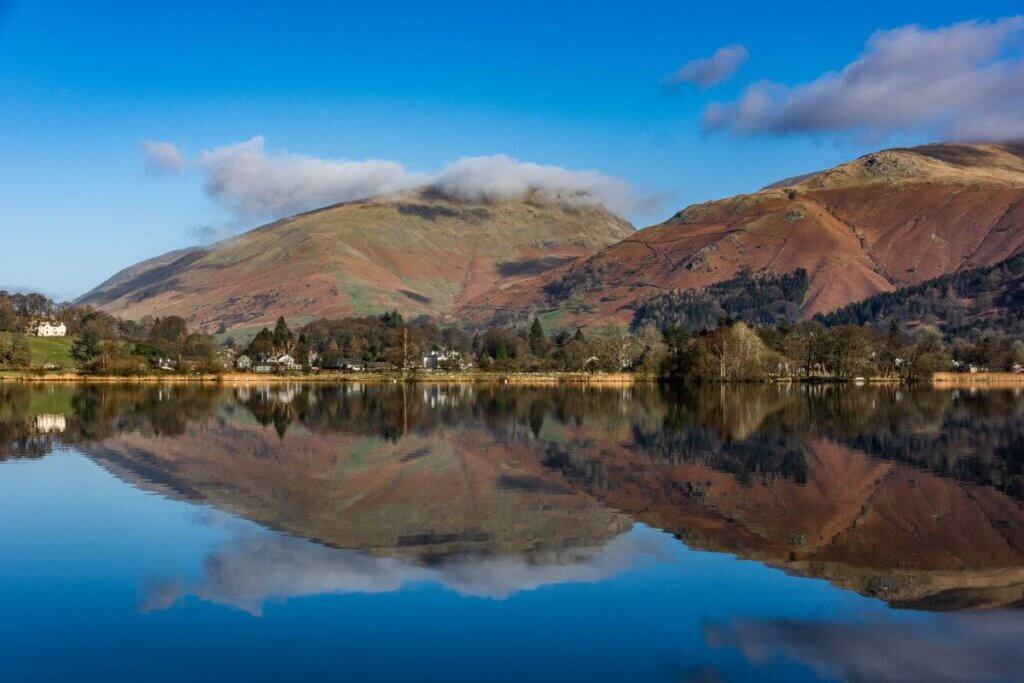
Chester
Home to the most complete city walls, the oldest racecourse and the largest Roman Amphitheatre in Britain, Chester is a delightful blend of old and new with lots of shopping opportunities.
Chester’s city walls were first constructed when it was founded in 79 AD as a Roman Fort. Later on, Chester was one of the last cities in England to fall to the Normans, and after taking it, William the Conqueror ordered a castle built.
Along with the castle, city walls and Roman amphitheatre, Chester is well known for the Victorian black-and-white buildings that resemble the Tudor style. These half-timbered buildings, together with Chester’s iconic covered ‘Rows’ are home to many independent boutiques and high-street stores.
Daniel Craig, the actor who has portrayed James Bond in five films since 2006, was also born in Chester!
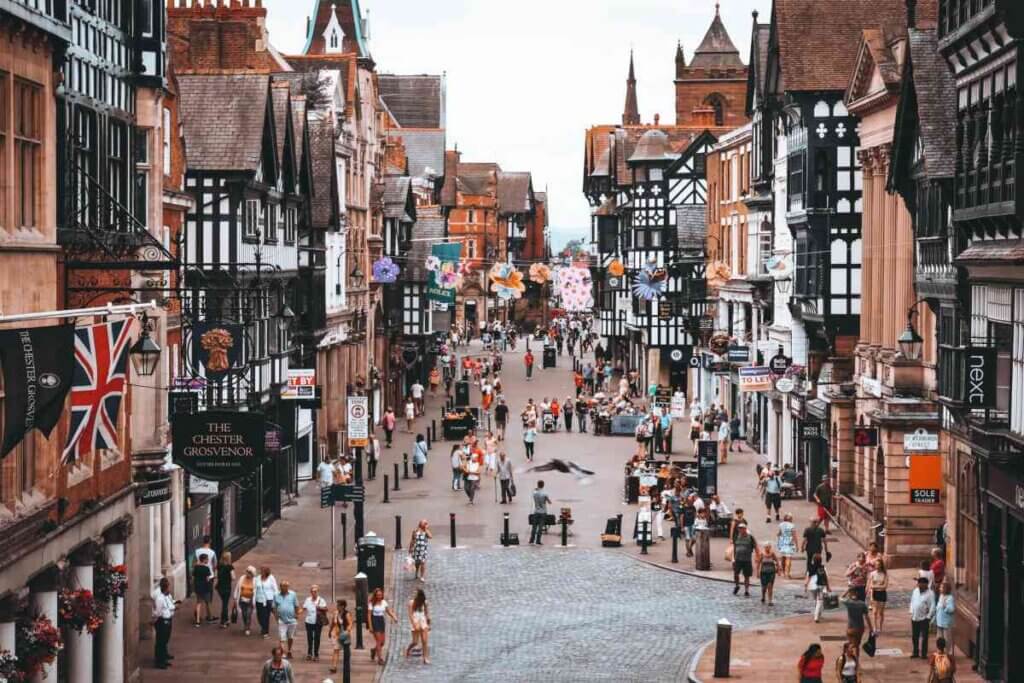
Lyme Park
Possibly most famous for portraying the exterior of Pemberley (the home of Mr Darcy) in the 1995 BBC version of Pride and Prejudice, Lyme Park is a gorgeous mansion house and estate, as well as one of the most beautiful places in North West England.
Along with the mansion, the grand estate of Lyme Park includes 15 acres of formal gardens, plus a 1,359 acre deer park, and a number of detached structures including an orangery. Visitors can enjoy the gardens and follies or step inside to see a recreation of Regency England.
There are also a number of cafés, shops and a restaurant on the site, plus you can bring your dog to enjoy the many walks on the estate.
PRACTICAL INFORMATION FOR VISITING: The grounds are open every day of the year except Christmas Day. The mansion is also closed on Christmas Day, and every Wednesday. It does cost a small fee to visit both the grounds and/or mansion, but parking is included in the fee.
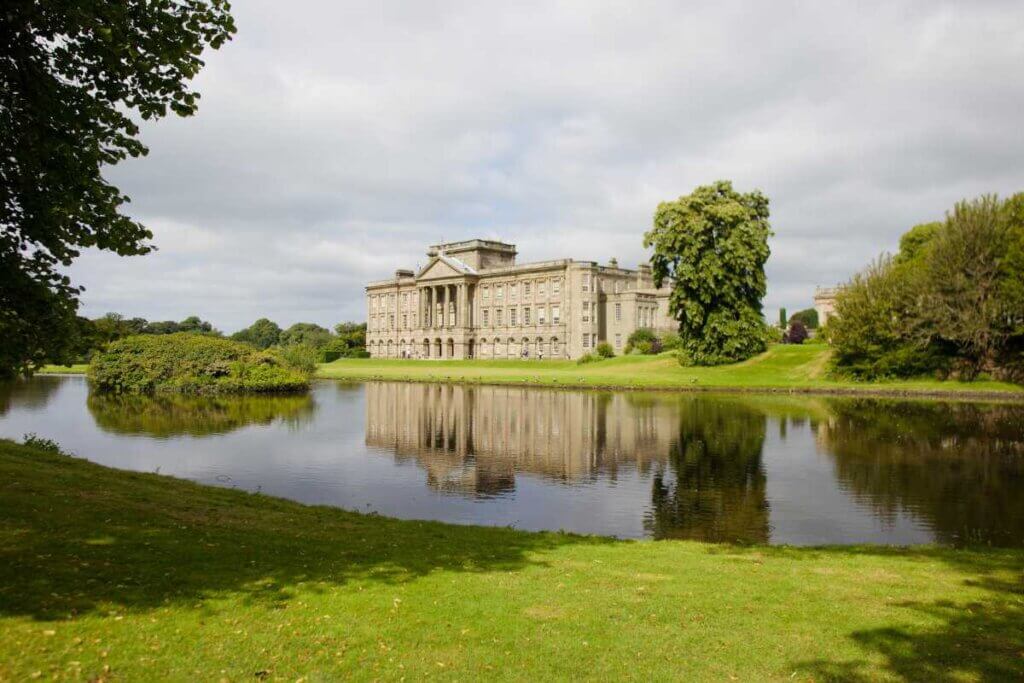
Stoke-on-Trent
Stoke-on-Trent is an interesting spot because, while it is a city, it has multiple city centers. This is because it was actually formed from six different towns: Tunstall, Burslem, Hanly, Stoke, Fenton and Longton.
Stoke-on-Trent has also been known as the home of the English pottery industry since the 17th century, as the area had abundant reserves of coal and clay. Famous pottery companies such as Wedgwood, Minton and Royal Doulton were all established here, so you can also visit many of the factories/showrooms if you are a fan.
The Potteries Museum and Art Gallery is a highlight for learning about the area known as the Potteries, along with the history of ceramics in the region. The Gladstone Museum shows an example of a coal-fired pottery, while the Erturia Industrial Museum lets visitors see a 19th century British steam-powered potter’s mill.
For visitors who are more into nature than pottery, Stoke-on-Trent is also home to the stunningly landscaped Trentham Gardens and Lake, as well as the Trentham Monkey Forest, a sanctuary where you can get up close and personal to endangered Barbary monkeys.
Peckforton Castle
Technically a Victorian country house built in the style of a castle, Peckforton Castle is, nevertheless, one of the best places to go in North West England to fulfil any prince/princess/knight fantasies you might have!
Originally built in the 19th century in the Gothic style as a family home, it has also served as a hostel for physically handicapped children during WWII, and as a filming location in the 70s and 80s. It’s now a Grade 1 Listed Heritage House and the only intact medieval style castle in England.
Peckforton Castle was converted into a luxury hotel and is now a very popular wedding destination, with two restaurants on site as well as space for corporate events.
Even if you don’t want to stay at the castle you can dine in the restaurants; the 1851 Restaurant does a fantastic Sunday roast lunch and the Brasserie, located in the original scullery, is great for afternoon tea.
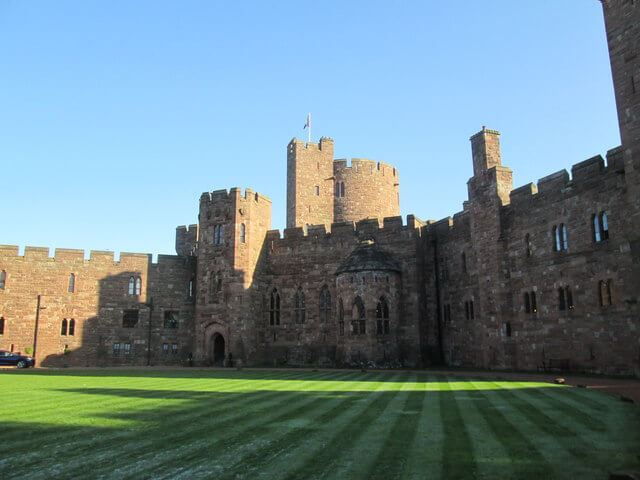
Levens Hall
If you like ornate landscaped gardens then you will not want to miss out on Levens Hall, one of the most unusual places to visit in North West England! It’s a manor house near the village of Levens, but the incredible topiary gardens are the real drawcard.
First created between 1689 and 1712 by French gardener Guillaume Beaumont (who was the gardener of King James II and also designed the grounds at Hampton Court Palace), the gardens at Levens Hall are thought to be the oldest topiary gardens in the world.
The whimsical abstract and geometric shapes of the ancient box and yew trees make you feel like you’re wandering among living sculptures. There are also pretty water features, rose gardens, wildflower meadows and a willow labyrinth to keep even the most ambivalent gardener entranced.
If you need a break, the Elizabethan House is also open to the public, with opulent rooms laid out to show the history of the building and its links to the Duke of Wellington.
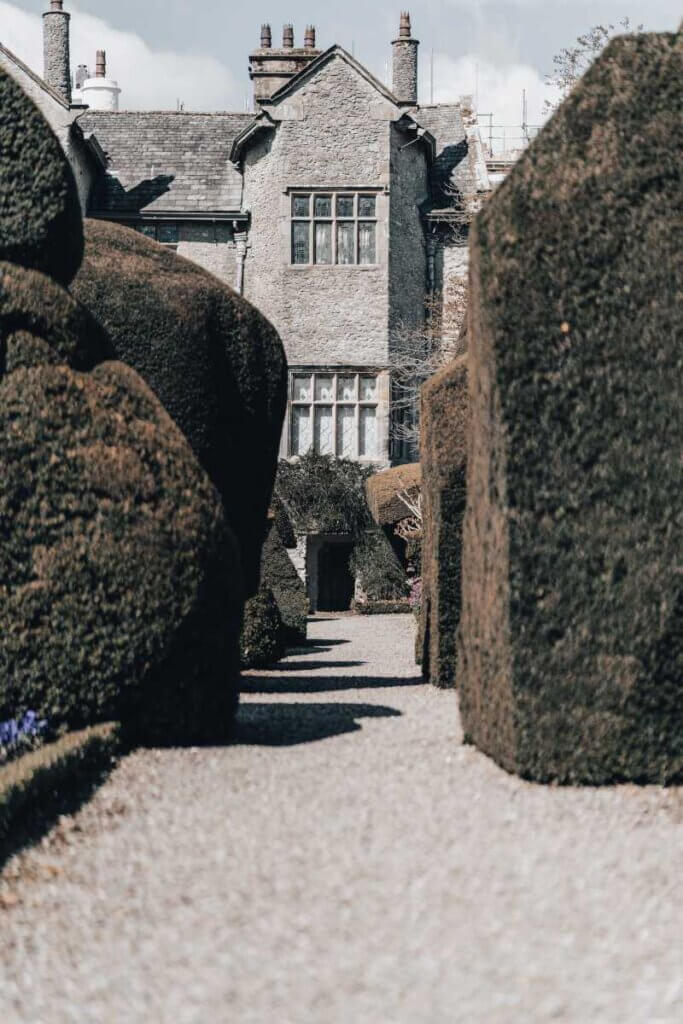
Lancaster Castle
For North West England attractions that are more about the history than the aesthetics, Lancaster Castle is an ideal destination.
For almost 1,000 years this castle in Lancaster served as a place of incarceration, punishment and execution, so it’s bound to be interesting to visitors who are fascinated by dark history.
You can visit and learn about the castle’s history on a guided tour but do be aware that these are not for the faint-hearted! Among the many people incarcerated and/or executed at Lancaster Castle are the ‘Catholic Martyrs’ – fifteen Catholics executed for their faith between 1584-1646, and the ‘Pendle Witches’ – ten people executed for witchcraft in 1612.
The Crown Court of England and Wales still also sits at the castle at certain times, so parts of the castle may not be accessible on days when this is the case.
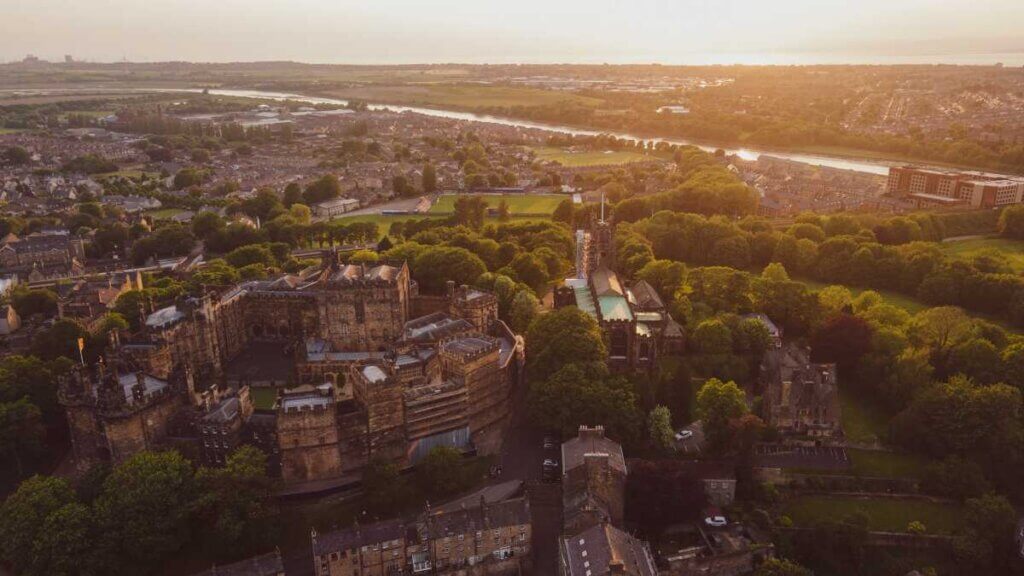
Have we missed any of your favourite places to visit in North West England?
Let us know in the comments!
